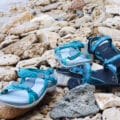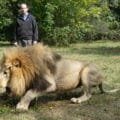
Could camping in the desert be dangerous? It’s possible…but you know what they say: by failing to prepare, you prepare to fail!
Nobody likes to think about the possible dangers of doing something fun. But being prepared for every eventuality is the best way to ensure that your camping and hiking experiences go as planned.
This week, we hear from David Shire who has studied infectious diseases in Israel. He writes about Leishmania, a parasitic disease that can be transmitted by desert sandflies. This type of infection causes nasty skin sores that can last for months.
Before you call off your next desert camping trip, know that contraction of Leishmania is preventable. Don’t sleep outside in the most affected areas. Make sure to wear long clothing and use insect repellent in places where these sandflies live. Then pack your bags and enjoy your desert camping trip with greater peace of mind.
Here’s what David has to say:
All About Leishmania
Of all the infectious and tropical diseases found in the Middle East, Leishmania is one of the most common. This brief article is a very general outline to the disease and more detailed reviews are available on-line.
Leishmania, “Rose of Jericho”, שושנת יריחו – is an infectious, parasitic disease caused by bites of infected Sandflies.
Before we look at Leishmania, a very brief review of the cycle of parasites: Parasites thrive and multiply in “hosts” and are transmitted from host to host by “vectors”.
Leishmania is a intracelluar Protozoa than can cause “Cutaneous Leishmaniasis” (skin sores which can develop several months after being bitten and with open sores that can last for a year or more) or “Visceral Leishmaniasis” (More common in wild animals and dogs -affecting internal organs – spleen, liver, bone marrow).
Leishmania is transmitted by female Sandflies which look like miniature mosquitoes – they are about a quarter of the size of a mosquito, which causes problems when relying on normal mosquito nets.

In nature, the host for Leishmania is the Rock Hyrax or Sand Rat, but as desert areas develop humans can also serve as hosts.
The Fine Print:
Sandflies are active during the summer – June to October – and mostly feed at night.
In Israel, specific infected areas are:
- Jordan Valley
- Northern Dead Sea Area (Jericho)
- Negev Desert
- Arava
- Samaria
Measures to prevent Leishmania infection:

- Install very fine mesh screens on windows and doors
- Do not sleep outdoors where Rock Hyraxes and Gerbils are found.
- Use Mosquito Repellents (only those with Ministry of Health certification)
- Wear long clothing
Treatment:
It is essential to have the disease properly identified – usually via a hospital referral.
The symptoms of Cutaneous Leishmanias can be reduced by topically applied ointments – prescribed by a doctor.
David Shire is a Landscape Gardener at White Flower Gardening but previously was a PhD student at the Kuvin Istitute for Infectious Diseases at Hadassah Medical School, Jerusalem – studying the relationship between Hyraxes and Leishmania.



